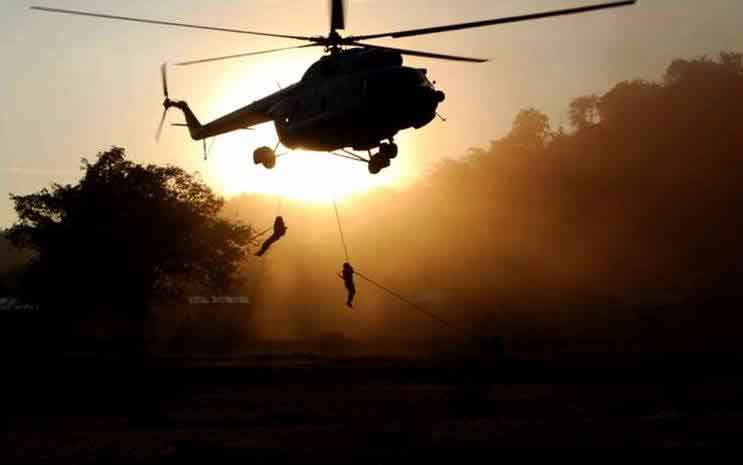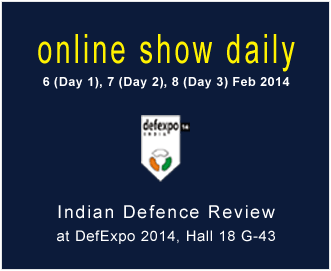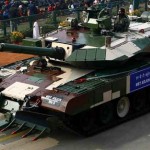Similarly, the test-bed for the Air Defence Control and Reporting System (ADC&RS) was conceived in isolation by the Indian Army without integrating the Indian Air Force knowing full well that overall responsibility of Air Defence lay with the latter. It was only later that the Indian Air Force was integrated into the test-bed for ADC&RS. Similarly, the requirement to make the appointment of Additional Director General of Military Survey tenable by an All Arms officer who has commanded a Division is necessary. If that had been the case, we would have avoided existing criticality of Military Survey not even having begun to develop an Enterprise GIS, producing Google based maps 30 years behind meeting military’s routine mapping requirements and not addressing large scale mapping requirements.
It is not only the project management systems of DGIS that have been affected by this system of three-year postings, extendable on a ‘case-by-case basis’. Most surprisingly, niche areas such as the Army Software Development Centre (ASDC), under DGIS, Army Cyber Group (ACG) under the Signal Officer-in-Chief and Defence Information and Research Agency (DARA) under HQ IDS, are also meted the same treatment. How ridiculous the system can be! And what more justification is required for a separate IT Cadre or whatever designation one wants to give it? The least that the military could have done was to let such organisations be manned by women officers for their complete service tenure. The need for an IT cadre needs re-examination on priority.
The importance of the human dimension in developing NCW capability unfortunately remains the least understood and researched domain of NCW…
In the Army, every time a new operational system is tested in the field, the Signals projects demand increase in manpower by hundreds. NCW is supposed to decrease overall manpower but that happens only in the long run. The experience in militaries of developed countries has been that when new systems are introduced, the manpower requirement actually ‘goes up’, which is followed by a period of gestation, stabilisation and finally, decrease. Therefore, it would be prudent for the Military, particularly the Indian Army to examine the need for a separate IT Cadre.
Additionally, while the Military is yet to define a Policy for Modeling and Simulation, for developing, establishing, fielding such systems, as well as in the field of operational research, there can be no shortcut to specialisation. All this will require a group of professionals with experience in this field and specialising on these aspects in a sustained manner.
Next is the vital requirement for senior appointments at policy making levels to understand technology or make credible efforts to do so. In no case does this only imply an M.Tech or B.Tech degree. As part of the Chinese revolution in military affairs, only those PLA officers are posted in policy making appointment related to NCW who understand technology. In the case of the Indian military, it is not uncommon for senior officers posted at Vice Chief and Deputy Chief level admitting privately that they do not understand technology. It was for similar reasons, the development of Phase III of F-INSAS (Computer and Radio Sub Systems plus Software Integration) continues by the Infantry, simultaneous to the development of BMS by DGIS, despite the fact that BMS caters for complete army at unit and regiment level including the infantry and there is no reason for Infantry to re-invent the wheel.
The Operations Branch of the Indian Navy is headed by the Assistant Chief of Naval Staff (Operations and Information Warfare) but the Military Operations does not even have a Information Systems Cell, though there are two sections dealing with Signals and manned by officers from the Corps of Signals. The tussle between Applications and Networks is a global phenomenon observed in foreign militaries as well – the chicken and egg syndrome. Both are interdependent like the pillars and roof of a building. The synergy, therefore, has to come through the architect. It is for this reason that the appointment of Deputy Chief of Army Staff (Information Systems & Telecommunications) was created to ensure concomitant development between applications and networks. In the beginning, there was no staff authorised under him to advise him on Information Systems. A start was made in this direction many years later by creating a Cell under him to render advice but more needs to be done. In the absence of expertise on information systems in Military Operations, case files are stuck for months shuttling between Operations and Signals.
Interestingly, the case file to affix responsibility for ensuring security of Army Intranet shuttled within the Army HQ for full three years but post decisions last-mile security has still not been fully ensured because of which e-learning programs have not taken off. Military Operations has charged the Additional Director General (Electronic Warfare) to look after cases of information systems but that has not worked well. In one case, the ADG (EW) wanted the DSS module of CIDSS scrapped because as per him, the DSS should decisively give out the course of option to be adopted, an example of inadequacy of M.Tech/B.Tech degrees by themselves. Despite possessing the maximum degree holders, the Signals Directorate is still not automated. These are issues that need to be looked into by the Military and the Indian Army.
Conclusion
The importance of the human dimension in developing NCW capability is well known but unfortunately, it remains the least understood and researched domain. Our difficulties in conceptualising the human dimension and its complexity are arguably the reason it has fallen behind NCW related materiel enhancements. The fact that materiel enhancements alone will not generate the desired mission effects, is well understood, but coordinated work to link effectively doctrine, organisation, training, materiel, leadership and personnel enhancements has been exceptionally slow in case of the Indian Military. There is definite need for reviewing our focus on the human dimension of NCW.






